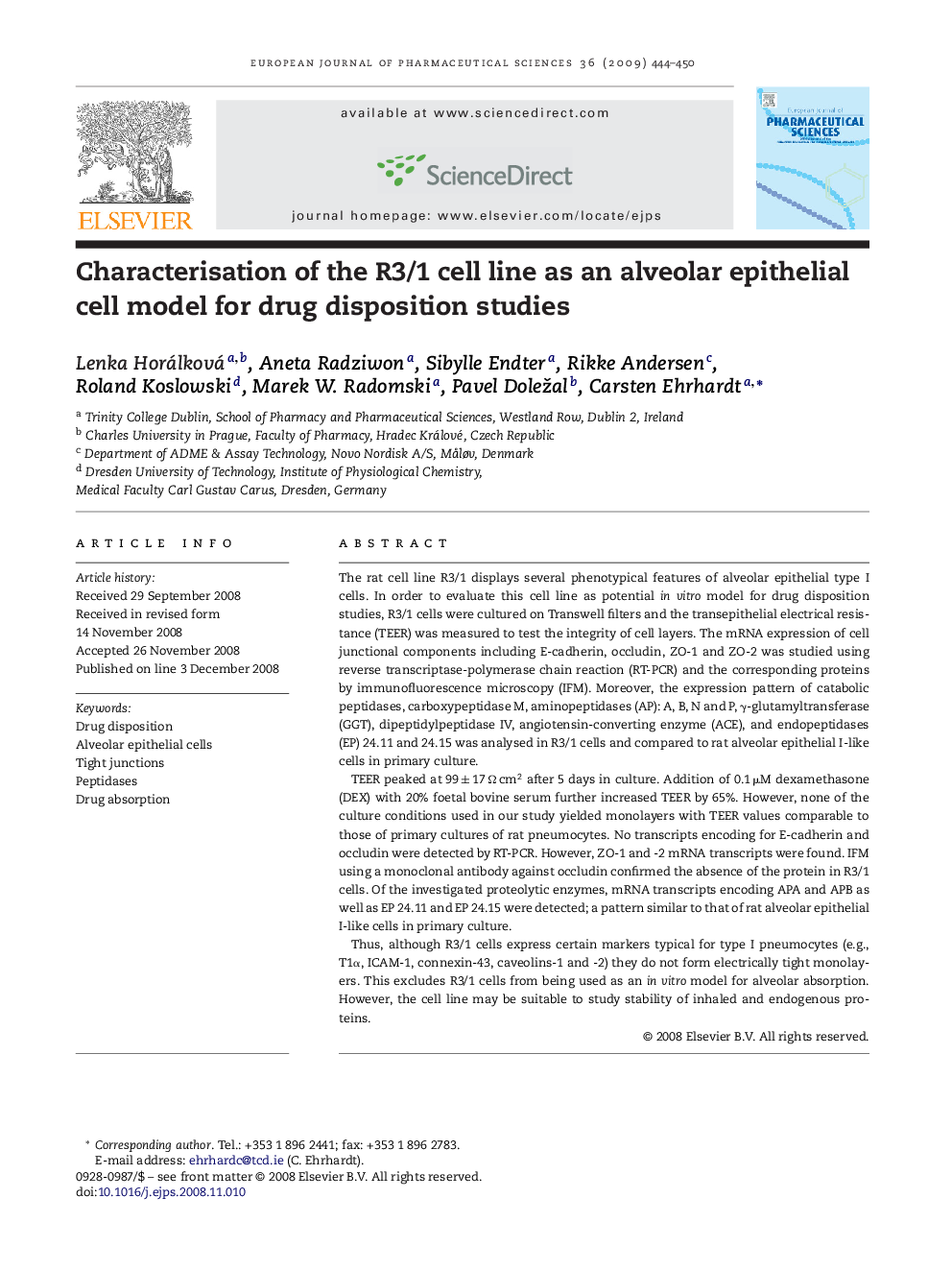| کد مقاله | کد نشریه | سال انتشار | مقاله انگلیسی | نسخه تمام متن |
|---|---|---|---|---|
| 2482145 | 1556261 | 2009 | 7 صفحه PDF | دانلود رایگان |

The rat cell line R3/1 displays several phenotypical features of alveolar epithelial type I cells. In order to evaluate this cell line as potential in vitro model for drug disposition studies, R3/1 cells were cultured on Transwell filters and the transepithelial electrical resistance (TEER) was measured to test the integrity of cell layers. The mRNA expression of cell junctional components including E-cadherin, occludin, ZO-1 and ZO-2 was studied using reverse transcriptase-polymerase chain reaction (RT-PCR) and the corresponding proteins by immunofluorescence microscopy (IFM). Moreover, the expression pattern of catabolic peptidases, carboxypeptidase M, aminopeptidases (AP): A, B, N and P, γ-glutamyltransferase (GGT), dipeptidylpeptidase IV, angiotensin-converting enzyme (ACE), and endopeptidases (EP) 24.11 and 24.15 was analysed in R3/1 cells and compared to rat alveolar epithelial I-like cells in primary culture.TEER peaked at 99 ± 17 Ω cm2 after 5 days in culture. Addition of 0.1 μM dexamethasone (DEX) with 20% foetal bovine serum further increased TEER by 65%. However, none of the culture conditions used in our study yielded monolayers with TEER values comparable to those of primary cultures of rat pneumocytes. No transcripts encoding for E-cadherin and occludin were detected by RT-PCR. However, ZO-1 and -2 mRNA transcripts were found. IFM using a monoclonal antibody against occludin confirmed the absence of the protein in R3/1 cells. Of the investigated proteolytic enzymes, mRNA transcripts encoding APA and APB as well as EP 24.11 and EP 24.15 were detected; a pattern similar to that of rat alveolar epithelial I-like cells in primary culture.Thus, although R3/1 cells express certain markers typical for type I pneumocytes (e.g., T1α, ICAM-1, connexin-43, caveolins-1 and -2) they do not form electrically tight monolayers. This excludes R3/1 cells from being used as an in vitro model for alveolar absorption. However, the cell line may be suitable to study stability of inhaled and endogenous proteins.
Journal: European Journal of Pharmaceutical Sciences - Volume 36, Issues 4–5, 2 March 2009, Pages 444–450